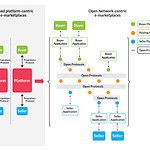Antariksh Matters: Putting space ambitions in context
— Pranav R Satyanath
The Artemis 1 mission rocket stays grounded, ready to launch on another day. The North American Space Administration (NASA) made two unsuccessful attempts to get the massive Space Launch System (SLS) rocket off the ground. The first attempt to launch the Artemis 1 mission, the rocket's Engine-3 (SLS has four engines) faced a cooling issue. During the second attempt on September 3rd, NASA aborted the launch due to a fuel leak issue.. But the SLS stands tall to be launched another day.
The Artemis mission has raised the prospect of a new space race in popular media, with some even proclaiming that space is getting excited once again.
But the narrative around the space race is flawed, both in the context of the Cold War and the present day.
True, the United States and China plan to send humans back to the Moon by 2026. By pitting two countries’ space programmes, however, we often forget the domestic politics and organisational drivers of national space programmes. The refusal to open the ‘black box’ of domestic politics often skews our perception as to what really motivates countries to undertake certain actions, whether it is in the realm of national security or civilian space programmes.
During the Cold War, the US and the Soviet Union had set up their respective space programmes to achieve completely separate goals. In the US, successive Presidential administrations kept the civilian and military space programmes strictly separate, with NASA placed as the heart of all civilian space ambitions. The Department of Defense (and individual branches of the US military) took it upon themselves to drive the direction of the ballistic missile and missile defence programmes. Approval of budgets and high-level decision-making fell on the hands of the President, with each new Presidentsetting the course of the space program and fighting for NASA’s budgets in Congress.
In stark contrast, decision-making in the Soviet Union was decentralised. The Soviet military, in particular, prioritised the missile programme in order to match the numerical and technological prowess of the US. The technology derived from the ballistic missile programme often drove the space programme. In parallel, influential heads of design bureaus, namely Sergei Korolev (design bureau OKB-1), Vladimir Chelomey (design bureau OKB-52) and Valentin Glushko (OKB-546), led the way to propose space missions and rocket payloads to the higher Soviet leadership. The outcome of interpersonal rivalries between these men (and their design bureaus) often led to a disorganised space programme within the USSR.
While the Soviets achieved great success with the launch of the world's first satellite, dog, man and woman in space, the Moon did not capture the interest of the Soviet leadership, led by Nikita Khrushchev until August 1964 — three months after the first launch of the Saturn-1 rocket that carried Apollo astronauts to the Moon. The Soviet Union ultimately lost the “race” to the Moon as the motives and commitment to a Moon race was very different from what the Americans perceived Soviet ambitions to be.
Today, the new race to the Moon is also driven by domestic politics and marketed by domestic politics and asymmetric goals. The US aims to make its Moon landing sustainable with a long-term presence alongside its partners. On the other hand, China's goals are much more modest as it seeks to land humans on the Moon’s surface by 2026. To claim the existence of a space race often takes away the nuances of national ambitions and achievable goals. As policy wonks, therefore, we must be wary of catchy yet flawed narratives,
Matsyanyaaya #1: Where Knowledge is Free and Accessible to All
— Bharath Reddy
A White House directive on 25th August requires agencies to update their public access policies as soon as possible to provide open access to taxpayer-funded publications and research. The move is expected to broaden access to research and yield significant benefits to the public on issues ranging from climate change to cancer research to protecting civil liberties in an automated world. This directive not only makes scientific research more accessible to the broader research community, it could also have implications for research funded by Indian taxpayers.
This White House directive overrides a 2013 directive which required federal agencies with an annual grant greater than $100 million to make their research publicly available. The 2013 directive also allowed for a year-long embargo on the research and accompanying data. As expected, scientific journals use embargos to create exclusive access to research and gain subscriptions. Academics would also prefer to publish their research in journals with a better impact factor, which is a measure of the number of times an average article in the journal has been cited. The new directive expands the scope to all agencies receiving federal funding and ends the optional embargo.
This move is expected to radically transform access to research and has been praised by open research advocates and the research community. The New York Times quotes Mr Tanenbaum of the Open Research Funders Group as saying the policy “broadens the circle of science. It broadens the conversation”. This move could, however, have a significant impact on the current revenue models of journals. It would force them to look at alternative sources of revenue, which might significantly increase article processing costs.
Publishing research in journals has been the conventional approach of communicating research. Journals operate on a subscription-based model. They charge hefty amounts from authors for publication and are only accessible by those who pay the significant subscription charges. These paywalled articles pose a significant cost barrier, and the costs can add up when referencing dozens of articles for a paper. Many people will end up not having access to such research unless they are part of a large institution that pays for a subscription to most of the journals. Studies have shown that across disciplines, freely available articles have a greater research impact. In addition, it is unethical that the fruits of the research funded by taxpayer money should not be accessible to the public.
The trend has been changing, with more research being published in online open-access journals. Open access requires granting all users an unrestricted, irrevocable, worldwide, perpetual right of access with a licence to copy, distribute, transmit and display the work publicly and digital publication in at least one open access repository. Awareness and momentum around open access to research has been growing globally with many institutions across USA and Europe adopting open access policies.
India has had a policy on open access to the Department of Biotechnology (DBT) and Department of Science and Technology(DST) funded research since late 2014. Per this policy, any research partially or fully funded by DBT or DST or performed on infrastructure built with the support of these organisations should be made available in open access repositories maintained by their institutions or those maintained by DBT and DST. If the research is published prior in a journal that insists on an embargo, the policy recommends that the period of the embargo should not exceed one year.
While this policy is laudable in terms of its intent, the implementation and impact have been poor. This can be attributed to poor state capacity and non-alignment of the journal and academic incentives. With the reforms imposed by the White House directive, the incentives and revenue models of the journals are expected to change significantly. This precedent could have a positive impact on Indian taxpayer-funded research as well.
The MHRD must take the initiative to expand the open access policy to all government-funded research. In addition to setting up national open access repositories, high-quality open journals should also be set up in multiple disciplines to provide a credible platform for academics to publish their research. The journal editorial board should include renowned academics from around the world and be granted operational independence to ensure the quality of the research being published. The platform should not be restricted only to Indian research but must welcome excellent research from across the world. Over time the costs incurred will yield returns by providing broad access to research but also in nurturing and growing the research community.
These timeless lines by Tagore can guide us, “Where the mind is without fear and the head is held high, where knowledge is free”, “Into that heaven of freedom, my father, let my country awake”.
Matsyanyaaya #2: How can India use Technology as a Strategic Tool to Advance its Interests?
— Arjun Gargeyas
In the current Information Age, technology has become a ubiquitous part of every country’s society. Citizens are empowered in a wide range of ways with improved access to technology, states’ economic sectors are transitioning into the digital space, and tech development has been outpacing regulations and governance regularly. This is the era where technology is becoming a strategic tool for the state to drive growth and protect its interests.
India, as a fledgling and rising technological power has the ability to leverage technology for the greater good. As seen from the past two decades, tech has simplified policy decisions and has improved the quality of governance in the country. The questions on accessibility, inclusion and levelling the playing field have been bridged by the use of technology to a certain extent. The Indian state should now start viewing technology and its adoption from a more strategic lens. But how can India use ‘technology’ to tackle existing problems as well as try to deploy it as a prospective solution in key areas of governance?
India’s Technology Assets
Frontier Areas of Expertise and Scale - India must focus on identifying and building on certain technology areas where it has made and can make a significant global impact. This can aid its technology exports and help expand its international digital and technological footprint. Low-cost telecommunication operations, renewable energy systems, and digital payment frameworks can serve as model areas that India can use as soft power tools in the technology sphere.
Skilled Labour Workforce in Multiple Domains - India should look to leverage the presence of the abundant domestic human capital in the country to create a strong workforce in specific technology areas that might prove to be critically important in the near future. The availability of low-cost labour must be used to persuade technologically advanced states to look at the Indian workforce as a contributing partner to some labour-intensive supply chains. Semiconductor design and IT services are areas that continue to require large pools of human resources, and India’s workforce has proven to be competent in these fields.
A Notable Presence in International Technology Supply Chains - Though a rising technological power, India has become essential in key areas of the high-technology realm. Other states depend considerably on India for certain technology supply chains because of its comparative advantages and expertise in specific processes. This must be used to India’s strategic advantage and to ensure it remains a factor in the international technology trade ecosystem.
Research and Development
The identification of critical technologies or key areas in technology supply chains to invest scientific and financial resources remains critical. The Indian state must consider extensive collaboration with the domestic private sector to enhance research and match global developments in specific strategic science and technology areas. This can eventually result in increased influence through a dominant domestic technology sector.
The focus on promoting research in technology areas where India-specific solutions are needed and are unlikely to be addressed by the developed world can be prioritised. Encouraging the use of open-source technologies to promote innovation free from state intervention, technology oligopolies, and international politics can help in India’s tech growth trajectory. This would make technology more accessible and more relevant to developmental challenges. Open-source technologies also serve as a counterweight to the dominance of Big Tech and aid technology sovereignty in an uncertain geopolitical climate. It can also bridge the trust deficit between the state and the citizens by addressing privacy and surveillance concerns.
While gaining a foothold in technology product development can create a zero-sum game between two or more parties, the scientific knowledge in the field itself is a non-zero-sum game. The Indian state should prioritise improving the dissemination of technical expertise as part of its technology strategy.
International Cooperation
The Indian state should not favour isolationism especially in the field of technology development. The process of collaborating in high-technology areas to tackle the existing bottlenecks in several supply chains must be one of the sector’s priorities. The principle of ‘plurilateralism being a necessity and not a choice’ while dealing with critical and emerging technologies must be championed if India aims to become a leading tech power.
Leading talks with fraternal multilateral groupings to build technological partnerships can be done. The Indian state should also engage in responsibilities such as improving technology-related trade, facilitating technology transfer agreements between participating states, and setting credible technology standards in critical and emerging technologies.
A good example would be to move forward on the recently signed India-Europe Trade and Technology Council to build a robust technology trade infrastructure. The focus should be removing export controls on components related to critical technologies and reducing import tariffs for high-tech products.
The Ministry of External Affairs must also take up a technology diplomacy approach to include science and technology as a source of outreach through appointed officials leading diplomatic conversations in the field.
A non-discriminatory data-sharing framework between states so long as the data in question does not infringe on India’s national security can allow India to be integrated digitally worldwide. This can include participation in multilateral technology data-sharing agreements if there are no compulsions to share critical data threatening its internal security and ensuring India's access to similar data from other signatories.
Finally, the state can lead global efforts to set forth universally-acceptable and legally-binding instruments on technologies that threaten the safety and security of all states. A techno-democratic alliance that prevents the control of specific technologies by selective groups, especially those potentially impacting warfare and conflict and detrimental to international security, can be led by India and its diplomatic partners.
Technology has become an integral aspect of international relations, foreign policy, military and defence in the recent past. As an aspiring world power, India should focus on utilising its strengths in the technological realm to advance its strategic interests. This would benefit both the Indian and society in the long run.
Our Reading Menu
[Book] The Red Rockets’ Glare: Spaceflight and the Soviet Imagination, 1857-1957 by Asif A. Siddiqi.
[Op-ed] Making the case for a new geolocation data privacy paradigm by Jason Sarfati.
[Blog] Takshashila Issue Brief - Public Access to Knowledge Resources.











Share this post